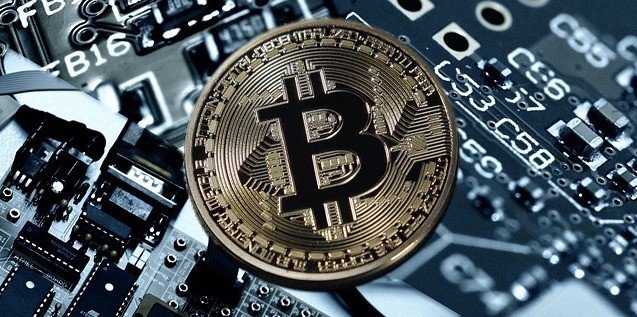How Does Bitcoin Really Work?
Bitcoin is a peer to peer electronic cash system (a digital cash system), contrary to the fiat currency system it has no central issuing authority to oversee its creation, distribution and regulation.
In the Bitcoin network transactions are directly between the two parties involved without an intermediary and are verified by network nodes secured with digital signatures. Digital signatures are made possible with the use of cryptographic key pairs to preserve a user’s anonymity i.e. the public key which is ones address is visible and accessible to anyone on the network while the private/secret key is only accessible to the owner.
At the start of a transaction, the system first checks if the amount to be transacted is available in the wallet before the user can sign the transaction message with his private key to generate a digital signature which is confirmed by the corresponding public key making it irreversible after which it is broadcasted to the entire network where its listened for by mining nodes and included in a block meaning that each and every transaction in the system has got to be digitally signed to be considered valid so as to overcome the double spending problem. Double spending is when someone uses the same bitcoins (BTC) in multiple transactions. The creation of new bitcoin and security of the Bitcoin network is ensured by an incentivized group of people called miners who contribute computational power to secure the global decentralized ledger of transactions, the Blockchain. Each mining node has a copy of the Blockchain and their role is to listen for new transactions, make a block of those transactions and compute the proof of work, which is a random number which when hashed with the SHA 256 (Secure Hash Function 256) produces a hash with a certain number of zeros, this difficulty is adjusted so as to ensure that the proof of work can be found in averagely ten minutes meaning that regardless of how simple or sophiscated the mining equipment is, the proof of work can only be discovered in an average of ten minutes.
The mining process, a way of harmonizing the Blockchain is a race with mining nodes competing to find the proof of work which qualifies the block as valid and the only condition on which the that block can be added onto the block chain for others to build on making it very difficult to make changes on one block of transactions as it would mean finding the proof of work of the previous blocks, an infeasible task. In competing to find the next valid block to add onto the Blockchain, the proof of work difficulty is increased thereby making it very hard for a single operator or a group of dishonest nodes to hijack the Network in a 51% attack.
In each and every transaction miners are allowed to add a transaction which generates them a certain number of bitcoins, this is called the block reward and is the only way new bitcoins are introduced into the network. The block reward is adjusted every after 210,000 blocks are created which takes approximately four years with the first block reward being 50 bitcoins in 2009, then halved to 25 bitcoins in 2012 and is currently 12.5 bitcoins and will keep reducing until the last Bitcoin is mined around 2140 which will make the total number of Bitcoins in circulation 21 million analogous of precious metal mining giving it its rarity property. One of the challenges to the security of the Blockchain is the 51% attack, a situation in which the mining nodes contributing the biggest percentage of network mining power (at least 50%) include invalid transactions in their blocks, force those blocks into the Blockchain and continue building on that false chain. This attack can only be successful for as long as the hijacking node/nodes beat the honest ones to finding the next valid block and continue propagating their false chain making it longer than the one on which the honest nodes (Nodes that are following the protocol rules) are building on.
At the current rate, given the increased difficulty of finding proof of work, the fact that miners are scattered all over the world, and the increased team work of the mining community, gathering computation power to make the 50% threshold capable of staging the 51% attack would prove to be a very costly venture, almost infeasible.
The only acceptable way of impacting the Blockchain is through a fork that is to say through change of the Bitcoin protocol rules. There are two types of forks namely the soft and hard fork. The soft fork happens when the previously valid blocks are made invalid while at the same time the old nodes consider the new blocks created after the software upgrade valid. A soft fork only requires a majority of the nodes to upgrade to the new software to enforce the new rules though it can also occur when the Blockchain is diverged as a result of miners using none upgraded nodes that violate new consensus rules that they don’t know about continuing to produce blocks leading to two different chains. This is however rectified by making the chain propagated by the old nodes stale resulting in the old nodes upgrading to the new software with new rules.
On the other hand a hardfork occurs when previously invalid transactions are considered invalid (and vice versa) with the new consensus rules requiring all nodes to upgrade to the new software for their blocks to be considered valid. In the event that some miners upgrade their nodes and others don’t, a permanent divergence of the Blockchain is effected resulting in two independent Blockchains with each following its own rules and only considering its transactions as valid.
The Bitcoin Cash hardfork that took place on 13 November 2017 is an example of hardfork happening on the Bitcoin Blockchain producing a new cryptocurrency, Bitcoin cash (BCH). The Bitcoin protocol rules keep changing to cater for the demands of a rapidly growing community, Issues such as scalability, transaction speed, transaction fees are some of the things that will pose serious development challenges that ought to be addressed for a better electronic cash system.
The history of transactions or the decentralized global ledger as a currency is only one of the many applications of the underlying technology, Blockchain whose resourceful use could contribute to and transform many aspects of life such as creating transparent voting systems, asset management, real estate management among others but that will take a while since the technology is still in its infancy.


Congratulations @mhtani! You received a personal award!
Click here to view your Board
Congratulations @mhtani! You received a personal award!
You can view your badges on your Steem Board and compare to others on the Steem Ranking
Vote for @Steemitboard as a witness to get one more award and increased upvotes!